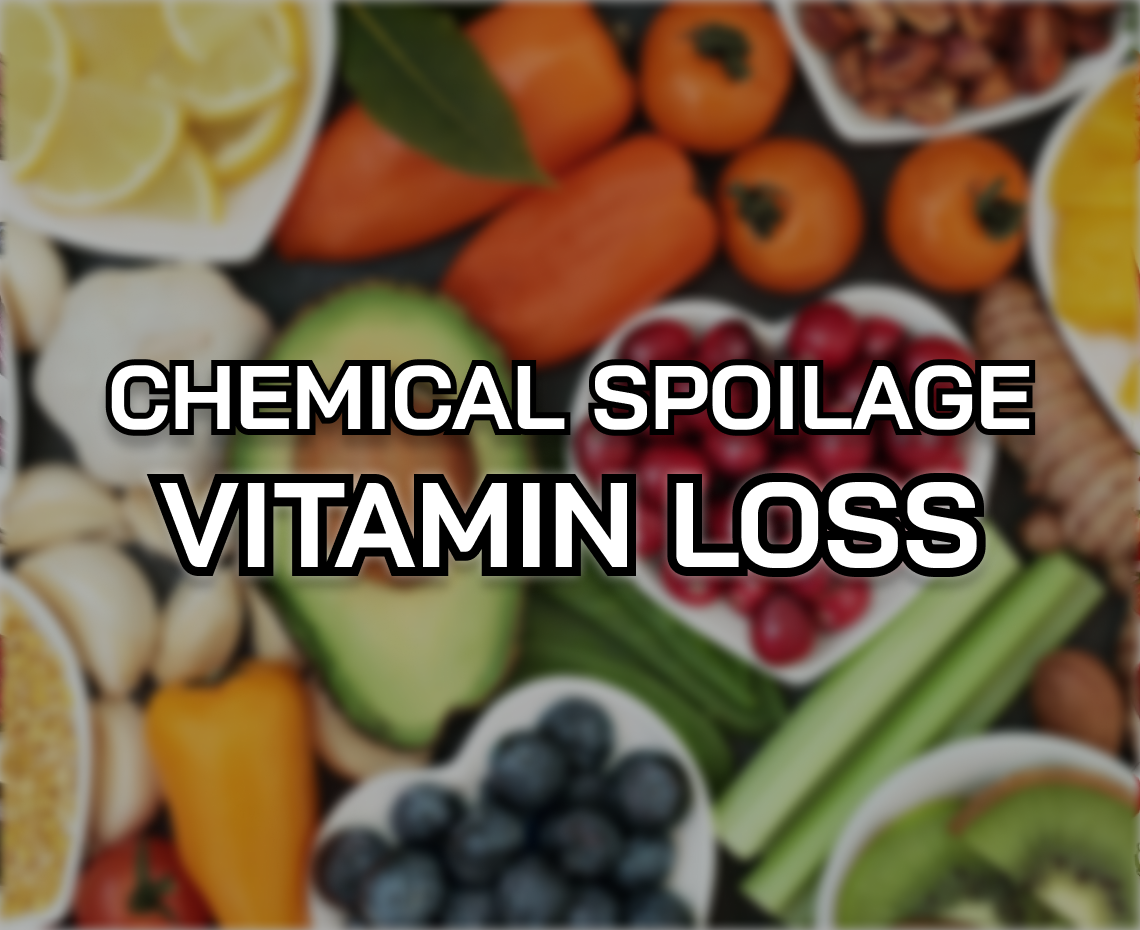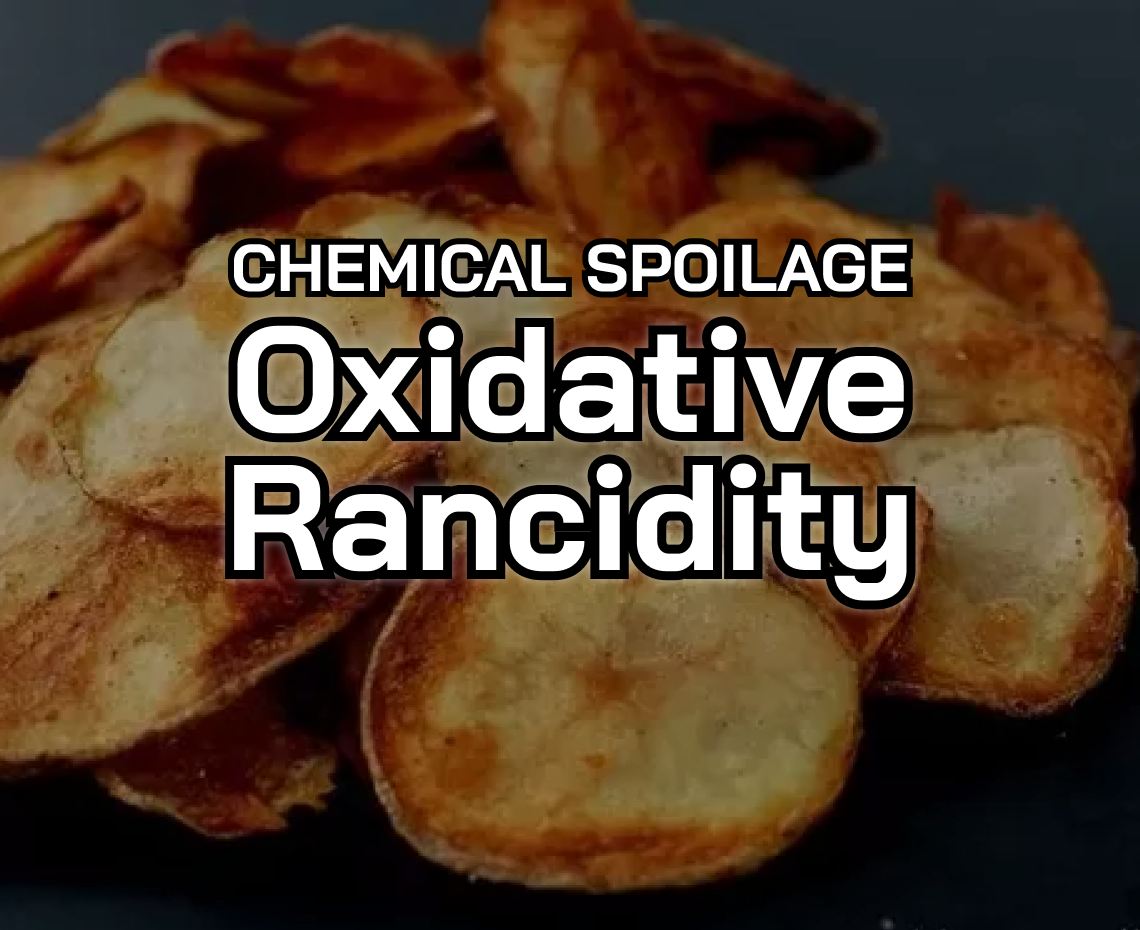Chemical Spoilage: Vitamin Loss

Loss of Vitamins in Food Products
Vitamins are important nutrients that can be lost due to various reactions during food processing or storage. This mechanism of failure serves as a catch-all for different reactions and can occur alongside other forms of spoilage. Vitamin loss is unique because it may not always alter the appearance or taste of a product. However, the consequence of vitamin loss goes beyond sensory changes, as it can result in misbranding, which is considered a regulatory failure.
Misbranding occurs when a product claims to contain a certain amount of vitamins, usually stated on the nutrition facts panel of the food package. It is inherently misbranded if a product fails to meet the declared vitamin levels.
In the past, regulatory enforcement of nutrition labels has been lenient. Missing vitamins and other types of misbranding have been viewed as less severe than other violations of the Food, Drug, and Cosmetic Act. While food safety will likely remain a priority for regulatory agencies, it is not advisable to knowingly market a product that does not contain the declared level of vitamins, especially when it reaches the end of its declared shelf-life.
What Causes Vitamin Loss?
Vitamins can be divided into two main categories: metabolic cofactors and antioxidants. These substances are naturally reactive and sensitive to degradation. Vitamins can degrade due to factors such as light, temperature, and oxidation. The most common type of vitamin loss occurs due to oxidation, which affects antioxidants like Vitamins A, C, and E.
Controlling Vitamin Loss in Food Products
The three factors leading to vitamin loss - light, temperature, and oxidation - can be managed using standard industry methods. For example, refrigeration and opaque packaging are commonly used techniques.
If a product developer plans to make a claim about the vitamin content, they must ensure that the planned packaging and distribution methods effectively control these factors to deliver the desired shelf life. However, some vitamin loss may still occur even with the best storage and distribution systems. This is why conducting careful storage studies is crucial. Adequate testing of samples in these studies is important, as vitamin losses may vary from one product unit to another, as illustrated in the example below.
Example of Vitamin C Loss
A food manufacturer wanted to create a line of blended juice products fortified with Vitamin C in gable top cartons to give them a fresh juice feel. The formulations worked well when packed in glass, and the added Vitamin C survived the pasteurization process. However, a storage study showed that the desired 40-day shelf-life was impossible when packed in the standard gable top carton.
To address this issue, the packaging was upgraded to a new foil laminate structure with improved oxygen barrier properties. With this change, about 80% of the units achieved the desired shelf-life, while approximately 20% did not. Further investigation revealed that pin holes occurred in the foil during carton formation due to folds.
To avoid this issue, modern gable top cartons now use plastic laminates that prevent pin holes. Additionally, the industry has primarily shifted to screw top closures, which provide tighter sealing without the need to split the gable top to access the product for juice products. Screw top closures in most products have become the norm for gable top containers.
Adding Vitamins A or E
Fortifying foods with fat-soluble vitamins like Vitamins A or E can also be challenging. One challenge is ensuring that these vitamins are dispersed and added in the low doses required. Product developers who aim to extend the shelf-life of oily products by adding these natural antioxidants are often disappointed, as these vitamins can form relatively stable free radicals that can promote lipid oxidation and rancidity unless other control measures are implemented during the process. Moreover, these vitamins can also cause sensory issues in fortified products.
The key goal for fortified products is to confirm that the nutrient is delivered as intended and to ensure no unexpected complications. Careful monitoring and control measures are necessary to maintain these products' desired quality and shelf-life.
Ensuring Vitamin Levels Throughout Shelf-life
The loss of vitamins in food products during processing and storage can have significant implications, including misbranding and regulatory failures. Understanding the causes of vitamin loss, such as light, temperature, and oxidation, and implementing appropriate control measures is crucial for product developers to ensure the desired nutrient content and shelf-life.
At AEMTEK, we understand the challenges of maintaining vitamin levels in food products and offer comprehensive testing and monitoring services to help ensure product quality and safety. Our expertise in storage studies, packaging evaluation, and spoilage investigations can assist in preventing vitamin loss and achieving the desired shelf-life for fortified products. With careful monitoring and control measures, AEMTEK can help you deliver nutrient-rich food products that meet regulatory requirements and consumer expectations.
Contact us to learn more about our capabilities and how we can support your product development needs.


.png)